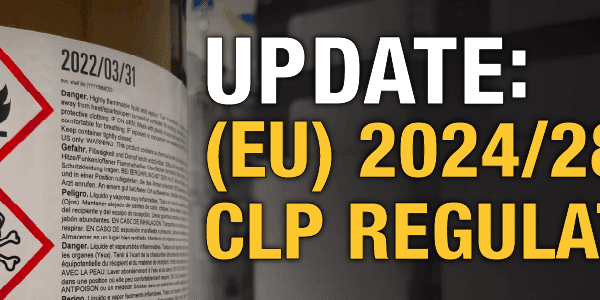Modern Forensic Science

[Dr. Charles Norris, New York City’s first chief medical examiner]. [Between 1920 and 1932?] Image. Retrieved from the Library of Congress, https://www.loc.gov/item/2013650279/. (Accessed September 02, 2016.)
Norris was a visionary of his time who reformed the New York City Medical Examiner’s office from a political plum into a modern instrument for protecting the public. This meant protecting them not just from the occasional thug or greedy heir lurking with a bottle of rat poison, but against some of the largest industries of the time, who, in a combination of greed and ignorance, often poisoned their own employees and the public at large.
Author Deborah Blum deftly outlines her heroes and villains. Charles Norris came from a family of bankers (his grandfather had negotiated the first loan to the federal government to finance the Civil War), and often would resort to using his own money to keep his office running. His expertise in toxicology served him well in finding new ways to detect chemicals and prove their role in the deaths of the unfortunates who ended up in his morgue.
Playing Robin to Norris’s Bruce Wayne was Alexander Gettler, a forensic chemist from an immigrant family. Despite their vastly different backgrounds, the two shared a dedication to science and to justice, and were determined to ensure that the first would be always used in the service of the second.
Science, Justice, and Poison
The villains were more wide-ranging. Some were the typical murderers associated with today’s forensic science. Many were able to walk away from their crimes due to the crude science of the time. Mary Frances Creighton was acquitted in the arsenic poisoning of her brother and mother-in-law, only to be convicted and executed years later for killing another woman. But each defeat sent Norris and Gettler back to the laboratory to discover ever more effective techniques for identifying chemical poisons.
But the actions of individual criminals didn’t endanger New Yorkers as much as some of the ostensibly law-abiding corporate citizens. The medical examiners were called in to investigate an oil company whose employees had nicknamed one facility the “looney gas building”. As Blum describes it,
“[t]he men who worked there … had become a little odd—moody, short-tempered, unable to sleep. They’d started getting lost on the familiar plant grounds, sometimes had trouble remembering their friends. And then in September 1924 the workers started collapsing, going into convulsions, babbling deliriously.”
Norris’s investigation pinned the blame on a chemical manufactured in that facility—tetraethyl lead—and identified its neurotoxic properties. The chemical was temporarily banned in New York City, until lobbying efforts restored it to a perceived “safe” status. Tetraethyl lead remained a common component of gasoline until concerns about the spike in environmental lead from car exhaust led to its phasing out in the 1970s .

US Radium Girls Argonne National Laboratory
Another chapter covers the plight of the “Radium Girls“, who painted clocks and watches with luminous paint, unaware that the appealing glow came from deadly radium. Taught to use their lips to put a point on their brushes, the workers, mostly teenagers and young women, soon suffered from the horrific effects of radiation poisoning. Norris and Gettler proved that the very bones of the victims had become radioactive.
Consumer Safety Regulations
The book gives a terrifying look at what a world without workplace or consumer safety regulations is like. By 1926, drunken drivers were already a menace (automobile accidents being the biggest killers in New York City that year), but elevators in high buildings were becoming death traps, taking 87 lives—most simply because no one thought to put up barriers and warning signs in front of empty elevator shafts. Deadly carbon monoxide came not only from the exhausts of the newfangled automobiles, but was piped directly into many homes as “illuminating gas,” and killed many from causes as simple as a faulty fitting. Another deadly gas, hydrogen cyanide, was used as a fumigant against rats and insects, with scant attention to its effects on humans nearby. Toxic chemicals such as arsenic could be easily purchased and used by members of the public who might or might not have any idea how to handle them safely.
But regulation could bring more danger to the public. Blum examines how Prohibition, designed to save people from the dangers of alcoholism, was killing more than unregulated alcohol ever had. Contaminated drink—caused by bad distilling in homemade stills, deliberate adulteration by bootleggers to increase their profits, or even by government who thought that “denaturing” illegal alcohol by pouring in toxic chemicals would keep people from drinking it—lived up to its nickname of “rotgut” in sometimes horrific fashion. The last part of the book shows, ironically, how counter-productive badly-conceived regulations can be.
The Poisoner’s Handbook: Murder and the Birth of Forensic Medicine in Jazz Age New York is a primer on criminology and safety, a glimpse into the fascinating world of 1920s New York City, and a morality play about the struggles of two men determined to protect the public from toxic monsters loosed upon them by apathy, greed and politics. In an era where regulations are seen by some as not worth their economic impact, the lesson of this book is that we can’t afford to avoid such a fight.
Questions about chemical safety in the workplace? Contact ICC Compliance Center’s regulatory department here at 1-888-442-9628 (USA) or 1-888-977-44834 (Canada).






 ICC USA
ICC USA ICC Canada
ICC Canada